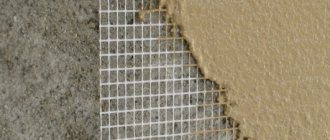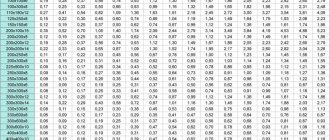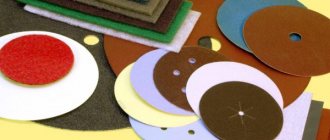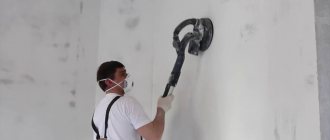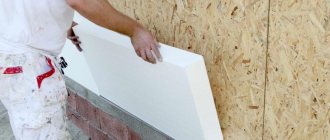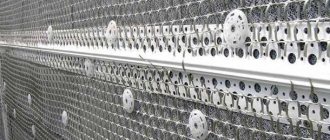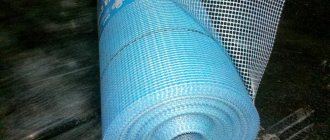The final stage of repair work on finishing walls for painting or wallpapering is the grouting of putty. The purpose of this procedure is the final correction of unevenness remaining after applying the finishing layer and smoothing out excess grain. The choice of materials and grinding method depends on the structure and area of the surface being processed. Even those who have never done repairs before can cope with the task.
Choice of abrasive material
Grouting of putty can be done using mechanical means or manually. When manually sanding, two types of abrasive materials are used: mesh and sandpaper for putty. Each of them has a number of advantages and disadvantages.
Sandpaper for grouting putty
This is the most common material, which is a fabric or paper-based tape on which an abrasive coating is applied. Sanding paper is sold in rolls and formatted strips and differs in grain size. Coarse-grained paper is used for stripping old paint and varnish coatings and sanding layers of plaster applied to walls. A tape with fine abrasive particles is used for finishing surfaces.
Sandpaper for grouting putty can be produced in several colors, but its quality depends only on the composition and grain size of the abrasive.
Advantages: low cost, the tape does not stretch and is available in a wide range.
Disadvantages: low strength and wear resistance.
Abrasive mesh
The mesh for grouting putty is made of fiberglass, coated on all sides with abrasive shavings, which is most often used as silicon carbide.
Enlarged image of the grid:
The material is sold in sets of formatted canvases of different sizes, as well as in rolls. The main characteristic of the mesh, like sanding paper, is its grain size. But in use it has a number of advantages over sandpaper.
Advantages: the cellular structure of the material allows dust resulting from grinding the finishing layer of putty to freely come out without clogging between the grains of the abrasive coating. Using mesh saves time because it is more wear-resistant than paper, which means it needs to be changed less often. This is a waterproof material that is suitable for grouting all types of building materials. It makes it easy to sand surfaces in hard-to-reach places.
Disadvantages: Can only be used with additional accessories. Since the mesh has a double-sided abrasive coating, it is almost impossible to hold the blade in your hands, so it is better to secure it correctly.
Thus, the answer to the question of how to rub putty is obvious.
Sanding mesh sizes
Work with the abrasive mesh very rarely with your hands, so as not to injure your fingers and skin, and also to achieve a high-quality coating. Usually a special device is used - a block (block or grater) made of wood or a grinder. The mesh for grinding putty is available in the form of rectangular sheets of standard size 105 × 280 mm or in rolls, but you should buy this abrasive tool based on the size of the bar. Then the grinding process will go quickly and easily.
For surface grinders, the abrasive mesh is available in a size that ideally matches their working sole and is simply attached. You can also find a grid in the form of circles. They must be selected taking into account the parameters of the equipment on which they will be used.
Marking of sanding materials
The main characteristic of an abrasive is its grain size, which is designated by the letter “P” in GOST markings. The numbers after the letter indicate the density of abrasive grains per unit area. The higher the value, the smaller the grain size. Some manufacturers use the old markings:
- “H” - when the grain size is calculated in tens of microns;
- “M” - if the fraction size is indicated in microns.
In this case, a larger value of the digital component of the marking indicates the presence of abrasive particles corresponding to a larger number.
For finishing grinding work, it is recommended to use sandpaper or abrasive mesh with the following markings: P150, P180 8-N, 6-N.
Characteristics
The abrasive mesh consists of perforated fiberglass sheets, onto the surface of which crushed silicon carbide is applied using glue. Usually it is made in the form of a rectangle measuring 105 × 280 mm, but material for grinding is also in demand in the shape of a circle.
The main technical characteristics of the mesh for grouting the putty surface is the grain size, which reflects the size of the abrasive substance fractions. It is indicated on the packaging and on the back of the sanding sheets.
Mesh marking is carried out similarly to foreign-made sandpaper (see next photo). In addition to grain size designations, the code may include other symbols by which they can be recognized:
- country of manufacture of the material;
- method of applying an abrasive layer;
- wear resistance;
- moisture resistance;
- appointment.
Advice! Even if the fabric is resistant to getting wet, it is undesirable to allow it to interact with water, since the material may lose its performance characteristics.
When choosing a mesh for grinding the surface of walls or ceilings, it should be taken into account that a larger number corresponds to abrasive particles of minimal size.
Devices for work
For high-quality grinding of the top layer of putty, one sandpaper or grouting mesh is not enough. It is necessary to have an arsenal of additional devices that will make the process easier and faster. The mandatory list includes:
- Grinders or graters, which are a block on which abrasive material is fixed using a manual or automatic clamp. Correctly attaching the mesh or paper to such a device is not difficult.
Attention!!! It is better to buy a grater with an elastic rather than a hard working surface. This will make the grouting of the putty better.
- Portable light source (flashlight, night light or spotlight from a projector). By directing the beam at the wall, you can identify all the irregularities formed as a result of grouting.
- Eye and respiratory protection. Sanding work is very dusty, so this precaution is justified.
For high-quality processing of corners, you can purchase a spongy trapezoidal block coated with abrasive.
This device will be a good help when grouting hard-to-reach places.
Application area
Abrasive painting mesh is purchased for sanding wall and ceiling bases made of wood, plasterboard and other materials. It is used for finishing putty on the base for wallpaper and painting. Based on the abrasive, the material is used for various plasters: putty, soft gypsum plasters. The surface to be treated can be cement, sand-lime, or gypsum.
The mesh is purchased for cleaning metal, plastic, concrete, and brick surfaces. It prepares the plastered surface for finishing. It not only polishes, but also removes rust, old paint, and whitewash from the metal body. It can be used to sand almost all types of plaster material.
Leveling process
To ensure high quality grinding, you must adhere to some rules for carrying out work:
- You can start grouting only after the finish coating has completely hardened. It is recommended to wait at least 24 hours after applying the last layer of putty;
- before starting work, you need to protect furniture and floors from dust with a covering film;
- First you need to mark the most obvious surface defects. You can determine their location using a lamp;
- It is recommended to start cleaning from the corners. Do not put too much pressure on the grater, otherwise you can create a “bald spot”, which will then have to be putty again;
- It’s better to immediately decide which sandpaper to rub the putty on. It is not recommended to change the abrasive material during operation;
- If you find depressions in the coating, you should not try to smooth them out with grout. It is better to then carefully putty them and sand them again.
Processing walls with a sander takes less time, but requires some skill. You may not calculate the force of pressure and ruin the coating.
Important! Ultimately, walls after mechanical grouting of putty require modification, because after it, as a rule, a lot of small defects remain.
Using Sanding Mesh for Walls
Processing walls using a sanding mesh can be done with a grater (block) or a power tool (grinder).
The technology of the process is not complex and is accessible to everyone. The sanding mesh is secured to the block using special clamps that ensure reliable fixation of the sandpaper. Next, grouting is done by hand. The movements are circular, with slight pressure, in all directions, expanding the coverage area. Already treated smooth areas are not re-treated, as this may deteriorate the quality of the coating.
When puttingtying walls, use starting putty before gluing wallpaper. After applying the first layer, the surface of the walls should dry. After this, the grouting process begins. They start with a coarse sanding mesh (40 units), use it to clean off all the irregularities and remove unnecessary grains of sand and particles.
The next step is to treat the walls with a primer, dry the layer and apply finishing putty. It is rubbed down with a sanding mesh of a larger number (you can take 60 units). When the finishing coat is applied and allowed to dry, you can use a medium-hard mesh (120 units) for final sanding. The final touch is the final primer of the sanded surface. As a result, the walls acquire the necessary smoothness and become fully prepared for wallpapering.
Dry walls are one of the most important factors in productive work, since when sanding damp walls, marks, scratches and other errors are sure to remain on the surface. It is also necessary to have a well-lit workplace. A powerful directional light lamp will help you see all the irregularities and perform the sanding correctly.
If you plan to wallpaper the ceiling, then the method of work remains the same.
How to rub putty
The final stage of repair work on finishing walls for painting or wallpapering is the grouting of putty. The purpose of this procedure is the final correction of unevenness remaining after applying the finishing layer and smoothing out excess grain. The choice of materials and grinding method depends on the structure and area of the surface being processed. Even those who have never done repairs before can cope with the task.
Classification
Grinding meshes have a standard size of 110 by 270 ml, but vary in grain size. In stores today you can buy nets:
For sanding finishing putty for painting, use 180-240 series; for cleaning walls under wallpaper, 120-150 grit is sufficient; for rough sanding, use AC 40-80. The higher the grain size, the finer the material is intended for work.
If you sand the surface for painting with mesh No. 40-120, then there will be marks on the wall or ceiling that the paint will not cover. If you clean the wall under the wallpaper with a material with a grain size of 180-240, the surface will be mirror smooth, but this will take a lot of time and effort.
